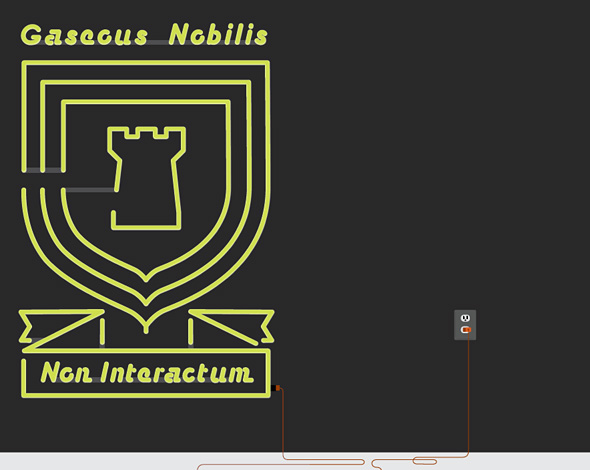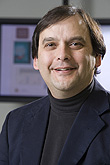|
Have a safe day!
Wednesday, July 6
12:30 p.m.
Special Seminar - One West
Speaker: Amanda Thompson, Fermilab
Title: Informational Presentation on Family-Based Greencards
for Spouses and Fiancés
3:30 p.m.
DIRECTOR'S COFFEE BREAK - 2nd Flr X-Over
4 p.m.
Fermilab Colloquium - One West
Speaker: Michael Golay, Massachusetts Institute of Technology
Title: The Fukushima Nuclear Event and its Implications for
Nuclear Power
Thursday, July 7
2:30 p.m.
Theoretical Physics Seminar - Curia II
Speaker: Pedro Machado, University of Sao Paulo / CEA Saclay
Title: Probing LED with Neutrino Oscillations
3:30 p.m.
DIRECTOR'S COFFEE BREAK - 2nd Flr X-Over
4 p.m.
Accelerator Physics and Technology Seminar - One West
Speaker: Veysel Demir, Northern Illinois University
Title: Scientific Computing on Graphics Processor Units: An Application in Time-Domain Electromagnetic Simulations
Click here for NALCAL,
a weekly calendar with links to additional information.
Upcoming conferences
|
|
Wednesday, July 6
- Breakfast: English muffin sandwich
- Beef barley soup
- Gyros
- Baked seafood au gratin
- Baked linguine and cheese
- Beef and cheddar panini
- Assorted sliced pizza
- Grilled chicken bowtie w/tomato cream
Wilson Hall Cafe Menu |
|
Wednesday, July 6
- Cornmeal-crusted catfish
- Creamy coleslaw w/ bacon
- Green beans w/ hot pepper vinegar
- Blueberry pumpkin pound cake
Friday, July 8
Closed
Chez Leon Menu
Call x3524 to make your reservation.
|
|
SSVSP deadline Thursday; New Q&As posted
The deadline to apply for the self-select voluntary separation program (SSVSP) is Thursday, July 7. To learn more about the SSVSP or how to apply, visit the website. New Q&As such as those below are available on the SSVSP site.
Q. Why is Fermilab still hiring new employees?
A. We must fill positions necessary for the continuing operation and success of the laboratory. We try to fill open positions, including in new projects, with our own staff to the maximum possible extent. In some cases, if we don't already have the critical skills needed within the laboratory, we need to fill those positions from outside. We hire new staff as sparingly as possible to maintain our progress and commitments to DOE, and we’ve continued to bring in people for temporary summer-time positions such as physics internships and necessary seasonal work such as lawn mowing.
Q. Can accrued vacation and severance pay be used to bridge any timeline gap, and make it so that I can take the SSVSP to initiate my retirement?
A. You must be eligible to retire on your separation date. You cannot use severance pay or accrued vacation to bridge the time gap.
Visit the SSVSP website for more information
|
Eminently noble
 |
| Illustration: Sandbox Studio |
When it comes to detecting neutrinos or particles of dark matter, four noble elements—helium, neon, argon, and xenon—stand out for their standoffishness.
Like the beckoning glow of neon signs in the night, the noble gases hold an irresistible allure for researchers. Shimmering and scintillating, these elitists of the periodic table have properties that seem custom-made for scientists on the track of dark matter particles or nearly undetectable neutrinos.
We’re most familiar with these elements in their gaseous, room-temperature forms. Helium fills party balloons and turns voices squeaky when inhaled; neon gas, along with other gases that glow in different colors, fills the glass tubing of neon signs. Lined up along the right edge of the periodic chart, helium, neon, argon, krypton, xenon, and radon are known as noble gases for their standoffish refusal to interact with their proletarian neighbors. Unlike the atoms of most elements, each noble atom keeps to itself, refusing to share electrons and form chemical bonds with other atoms.
When noble gases are chilled to liquid form, their inert, arms-length nature becomes a real advantage. Purified and poured into a particle detector, they give off flashes of light when particles pass through them. They also allow the trails of electrons left by charged particles to drift unimpeded toward the electrodes that wait to record them.
“They’re very nice materials for many reasons,” says Stephen Pordes, who works on R&D for noble-liquid detectors at Fermilab. “This technology is ripe for exploiting, and there are many active programs.” But, Pordes says, many technical challenges remain. His work is cut out for him; harnessing the unique properties of these elements is no easy task.
Read more
— Sara Reardon
|
Threatened butterflies leave Chicago nursery for prairie
From Chicago Tribune, June 30, 2011
Scientists have early success in effort to restore Baltimore checkerspots.
A spilled container of caterpillars turned out to be a happy mistake for scientists trying to raise imperiled Baltimore checkerspot butterflies on the green roof of the Peggy Notebaert Nature Museum.
Doug Taron and Vincent Olivares thought they had a method for keeping the caterpillars safe during the harsh Chicago winter: Store them in containers filled with dry, crumpled paper towels, protected by flowerpots. It had worked with the Gorgone checkerspot. But when they tried it with the Baltimore checkerspot two years ago, most of the caterpillars died.
"They looked like desiccated little mummies," Taron said. But one of the containers fell through the slats it was resting on, which allowed the paper towels to get wet, and all of those caterpillars survived.
For this species, the key to surviving the winter turned out to be humidity, and knowing that allowed the scientists to raise 180 adult butterflies they released Saturday on the grounds of Fermilab in Batavia.
Read more
|
|
IT improvements are on their way
Mark Kaletka, who leads Lab and Scientific Core Services in the Computing Sector, wrote this week’s column.
 |
| Mark Kaletka |
"The universe is change; our life is what our thoughts make it."
Marcus Aurelius Antoninus (121 CE - 180 CE), "Meditations"
This is certainly a time of great change, some of it a bit scary, most of it exciting, and everything full of opportunity. In the recently formed Computing Sector, we’ve become accustomed to a dizzying pace of technological and organizational changes as we provide for the evolving needs of our laboratory. Our most recent change has organized the Computing Sector into Scientific and Core Computing Divisions.
The Core Computing Division’s mission is to provide the essential Information Technology infrastructure and services to support the laboratory’s scientific program and business functions. These include services we all rely on every day, such as desktops and email; big commercial systems for business functions like financial accounting and human resources; and services like networks, storage, and even computer rooms, which aren't always visible but are absolutely vital.
This summer, members of the Core Computing Division will be working very hard to improve our IT infrastructure.
- We have completed the initial rollout of Windows 7 and are moving into the second phase, developing strategies for maintaining a standard, up-to-date desktop fleet.
- Our email infrastructure is undergoing a complete modernization, replacing systems as old as 10 years.
- We've just completed a major upgrade of the human resources system, and are beginning a similar, major upgrade of the financial system.
- Our network architecture is undergoing a comprehensive review that we’ll use to create a five-year improvement plan.
- The Service Desk tool, Remedy, is being replaced by an external cloud service, ServiceNow, which will save cost and provide a much-improved user interface.
We're very excited about these and other projects. Please watch for more news, and give us your postive and negative feedback through the Service Desk.
|
ES&H weekly report, July 5
This week's safety report, compiled by the Fermilab ES&H section, includes no recordable incidents and two injuries requiring first-aid treatment: One employee had a burr in his or her left index finger and another was stung by a wasp.
Find the full report here. |
|
July 1-4
- Five stores provided ~ 64.5 hours of luminosity
- Tevatron sector E48 kicker caused problems
- NuMI dehumidifier shut off due to problems for weekend
- Power glitch tripped off many devices
- MI-12 service building high temperature caused MiniBooNE to turn off for seven hours
- A1 transfer line suffered a vacuum burst
- Linac RF station (LRF2) problems held off beam for an hour
*The integrated luminosity for the period from 6/27/11 to 7/4/11 was 59.43 inverse picobarns. NuMI reported receiving 5.12E18 protons on target during this same period.
Read the Current Accelerator Update
Read the Early Bird Report
View the Tevatron Luminosity Charts
|
|